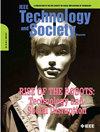Smart Farming Adoption in Europe
IF 2.1
4区 工程技术
Q3 ENGINEERING, ELECTRICAL & ELECTRONIC
引用次数: 0
Abstract
The Population of the world is now eight billion people, but it is expected to reach 9.7 billion by 2050 due to ongoing population growth欧洲智能农业的采用情况
目前世界人口为 80 亿,但由于人口持续增长,预计到 2050 年将达到 97 亿[1]。如此规模的人口面临着若干挑战,其中最重要的是需要扩大全球粮食生产,以满足营养需求。由于自然资源的低效利用给生态系统造成了过重的负担,传统的农业生产方式被认为无法满足这些需求 [2]。因此,我们不得不采用更有利于生态的农业方法。通过降低对外部投入的需求,协助农民应对因气候变化而日益频繁的不利天气,智能农业技术(SFTs)能够以可持续的方式提高作物产量,增强作物的抗逆性,降低二氧化碳排放量。截至 2020 年,美国对智能农业技术的接受率为 91% 美元[3],而加拿大、澳大利亚和其他欧洲国家则落在后面,成为采用智能农业技术最多的国家。要实现以可持续方式养活世界人口的目标,需要更广泛地使用可持续渔业,即使某些新兴国家正在加快采用率。
本文章由计算机程序翻译,如有差异,请以英文原文为准。
求助全文
约1分钟内获得全文
求助全文
来源期刊

IEEE Technology and Society Magazine
工程技术-工程:电子与电气
CiteScore
3.00
自引率
13.60%
发文量
72
审稿时长
>12 weeks
期刊介绍:
IEEE Technology and Society Magazine invites feature articles (refereed), special articles, and commentaries on topics within the scope of the IEEE Society on Social Implications of Technology, in the broad areas of social implications of electrotechnology, history of electrotechnology, and engineering ethics.
 求助内容:
求助内容: 应助结果提醒方式:
应助结果提醒方式:


